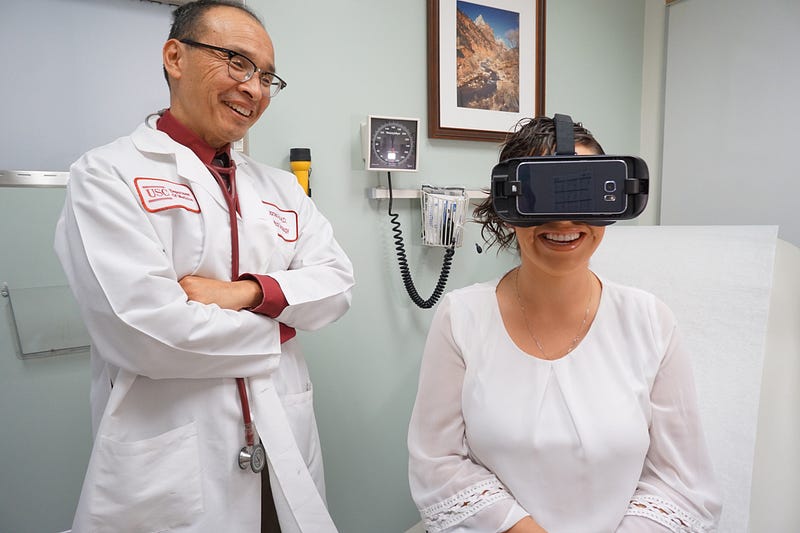Neural Cryptography, Treating Phobias and PTSD with VR, and Copycat Manufacturing
Neural Cryptography, Treating Phobias and PTSD with VR, and Copycat Manufacturing
- Last Updated: December 2, 2024
Yitaek Hwang
- Last Updated: December 2, 2024



Neural Cryptography — Self-Encrypting AI Messages
Last Friday’s massive DDoS attack on Dyn has raised serious concerns about security in IoT. This week, Martin Abadi and David Andersen from Google Brain, the deep learning team within Google, demonstrated that AI systems can teach themselves a simple form of encryption. Research concludes that neural networks can build a solid encryption protocol as long as security is prioritized. In the wake of security scares caused by Mirai IoT botnets, this is promising news showing that machine learning can devise its own security protocols as long as we prioritize it.

Summary:
- Research involved three deep neural network entities — Alice, Bob, and Eve — that were designed to be generative adversarial networks. This means that the neural networks were not trained specifically how to encrypt or decrypt messages.
- Alice taught itself to send 16-bit encrypted messages to Bob who then tried to decrypt the message using a shared key. Eve did not have access to the shared key and tried to intercept the information and decrypt it accordingly.
- After 7000 iterations, Alice and Bob figured out a encryption protocol that Eve no longer could crack reliably. This demonstrated the plausibility of using AI to generate encryption methods, given enough time.
Takeaway: The current encryption built by the neural networks is not very complex. However, this research demonstrates the use of AI to build on new cryptographic methods that may one day exceed human-designed systems. One downfall to this approach, as with the use of any deep learning systems, is that researchers may not understand how the encryption system works. New research by a team at MIT may have the answer to this, but for now, understanding how deep learning works remains a mystery.
+ arXiv: Learning to Protect Communications with Adversarial Neural Cryptography (Original Paper)
+ Science News: Technique reveals the basis for machine-learning systems’ decisions
Mind over Matter
Virtual reality has been used in healthcare settings to treat phobias and PTSD in the past. William Warren, the VP and Head of Innovation Programs at the vaccines division of a multi-national pharmaceutical company, describes that VR can be used to treat allergies and other health conditions without the use of medication. VR can pioneer new areas of medical treatment that is not dependent on slow development cycles of new vaccine and medicine.

Summary:
- The motivation for this research came from a trial that saw 60 percent of cases of placebo drug helping patients combat cat allergies. This led to the hypothesis that increased exposures to cats in an immersive VR environment may help the brain build up tolerance against allergens.
- Warren noted that VR can help stimulate the brain’s “internal pharmacy” when parts of its parasympathetic nervous system, which controls involuntary nervous functions, are stimulated by an immune response.
- Use of VR can help change the landscape of healthcare: drug development takes a long time and is costly (not to mention the concerns over antibiotics and superbugs). Warren notes that new vaccines take “between 12–20 years” to develop with “costs between $1–2 billion.”
Takeaway: VR has predominantly been linked to the gaming industry thus far. Its application to healthcare is exciting because it is an non-invasive and non-chemical alternative approach to treating diseases. Assuming that we can distribute VR sets faster than new drugs, VR can revolutionize the pharmaceutical industry and help accelerate the rate of alternative treatment.
+ diginomics: Machine learning used to treat epilepsy
+ Walk Again Project: using VR to help people with paralysis to walk again
Quote of the Week
The spread of copycat manufacturing isn’t just creating headaches for hardware companies and startups. It’s challenging traditional notions of intellectual property — specifically, what type of ideas are valuable, and what type of ideas are not.
Copycat manufacturers based in China are victimizing entrepreneurs on Kickstarter. Take Yekutiel Sherman, for example. Within a week of his selfie-stick product hitting Kickstarter last year, copycat vendors in China were selling identical products on Alibaba below Sherman’s expected retail price. As the reality that someone in China is going to make a cheaper replica of your invention sets in, entrepreneurs are now learning to protect IP differently.
Copycat manufacturing reflects the culture of open-source now creeping over to hardware. The manufacturers in China now view hardware designs as something to be freely shared: “Success in business comes down to speed and execution, not necessarily originality.” Now the onus is on the entrepreneur to create designs that are impossible to copy or complement the hardware with software components (e.g. iPhone running iOS). If there is a bright side to copycat manufacturing, it is those imitation products at least bring some market awareness for the new product.
The Rundown
- Follow up from last week’s discussion on bias in data sets: cognitive bias cheat sheet — Medium
- Applying Microsoft Emotion API to Presidential Debate — Data Dico
- Building an autonomous, voice-controlled, face-recognizing drone for $200 — O’Reilly
- Git from the inside out — Code Words
- Walter Isaacson’s interview with Jeff Bezos — Scene
- Game of Thrones Interactive Map — QuarterMaester
- Interview with Marc Andreessen — theMacro
Resources
- tsfresh: Automatic extraction of relevant features from time series
- PyData DC 2016: Released videos from PyData DC 2016 Conference
- HighwaySim: simulate a highway online
- WebBloatScoreCalculator: calculate how bloated your web page is
- Next.js: minimalistic framework for server-rendered React applications
The Most Comprehensive IoT Newsletter for Enterprises
Showcasing the highest-quality content, resources, news, and insights from the world of the Internet of Things. Subscribe to remain informed and up-to-date.
New Podcast Episode

What is Software-Defined Connectivity?
Related Articles




